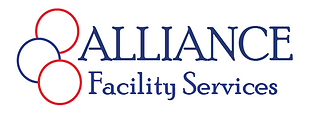Why Women Have Higher Heart Disease Risk than Men

April 19, 2023 by Medigroup
Women typically worry about the threat of heart disease to their fathers, husbands, and other male relatives. Today, however, medical experts know that heart disease is not just a man’s problem. Coronary heart disease, the number one cause of death in the United States, now claims men and women in nearly equal numbers.
According to an American Heart Association survey, about half of the women interviewed knew that heart disease is the leading cause of death in women, yet only 13% said it was their greatest personal health risk. The survey data suggests that women still worry more about breast cancer, despite heart disease killing six times as many women as breast cancer. How is that possible?
Why Women Worry More About Breast Cancer
Researchers believe that breast cancer has more far-reaching effects on women. Breast cancer can affect their self-image, self-esteem, and sexual identity in ways that heart disease diagnoses cannot. Heart disease also often strikes when women are 70 or older. So, the threat may not seem real or imminent to younger women. In addition, many women in their 50s know women their age with breast cancer but none with heart disease.
Women surveyed claim their physicians never talk to them about women’s heart issues or heart disease risk and may not even recognize the symptoms. Doctors may mistake them for symptoms of hypochondria, panic disorder, and stress.
Over 60 million women (44%) in the United States are living with some form of heart disease. Heart disease can affect women at any age. In 2020, it was responsible for the deaths of 314,186 women—about 20% of all female deaths. Research shows that only about half (56%) of US women recognize that heart disease is their number 1 killer.
Common Heart Disease Types in Women
The three most common forms of heart disease in females are:
1. Coronary artery disease: The leading cause of death in women is plaque in the arteries that supply blood to the heart and body. After women reach menopause, they have a higher risk of coronary artery disease due to hormonal changes.
2. Heart arrhythmia: Arrhythmia occurs when your heart beats too slowly, too fast, or irregularly. Like atrial fibrillation.
3. Heart failure: This occurs when your heart becomes too weak to pump sufficient blood to other organs in your body. It’s serious, but it doesn’t mean your heart has stopped beating.
Symptoms of Heart Blockage in Females
Some women have heart disease without symptoms. Others may experience:
- Angina—dull or heavy chest discomfort or ache
- Pain in the upper abdomen or back
- Pain in the neck, jaw, or throat
- Excessive or unrelenting tiredness, sudden fatigue
- Swelling in feet, ankles, legs, or abdomen
- Shortness of breath
- Heart attack
- Palpitations
- Dizziness
- Heartburn
- Nausea
- Vomiting
Symptoms of heart blockage in females may occur whether they are active or resting. If you have any of these symptoms, don’t delay. Call 9-1-1 immediately.
Heart Disease Risk Factors in Women
The greatest risk factors for heart disease among women include:
- High blood pressure (hypertension)
- High LDL (low-density lipoprotein cholesterol)
- Alcohol consumption
- Physical inactivity
- Smoking
- Diabetes
- Depression
- Excess weight
- Unhealthy diet
- Stress
High blood pressure is particularly insidious as a risk factor for heart disease. Over 56 million women in the United States (44.3%) have high blood pressure (130/80 or higher) or are taking blood pressure medicine, including almost 1 in 5 women of reproductive age. High blood pressure increases the risk of heart disease and can lead to premature death.
High blood pressure is underdiagnosed in females. Fewer than 1 in 4 women with high blood pressure control their condition. Pregnant women with high blood pressure have double the risk of developing heart disease later in life. Women also face factors related to their reproductive health and pregnancies, including:
- First menstrual period before age 11
- Early menopause before age 40
- Polycystic ovary syndrome
- Diabetes during pregnancy (gestational diabetes)
- Preterm delivery
- Delivery of low birth weight or high birth weight babies
- Hypertensive disorders of pregnancy
Reduce Your Risk of Developing Heart Disease
Know your blood pressure. Uncontrolled high blood pressure can cause heart disease, stroke, kidney failure, and dementia. Since high blood pressure has no symptoms, it’s important to monitor your blood pressure regularly and report readings above 130/80 to your healthcare provider. Check your LDL cholesterol and triglycerides, too.
Get tested for diabetes. Uncontrolled diabetes increases your risk of heart disease.
Quit smoking. If you don’t smoke, don’t start.
Perform 150 minutes (30 minutes, five times per week) of physical activity weekly. Even short bursts of activity (10 to 15 minutes each) are good for your heart.
Eat healthy whole foods. Being overweight or obese raises your risk of heart disease.
Limit alcohol consumption to one drink per day (zero is even better!). If you’re pregnant, don’t drink. There is no safe amount of alcohol during pregnancy.
Manage stress levels by finding healthy ways to cope.
Why Does Coronary Artery Disease Kill More Women than Men?
Since the late 1980s, coronary artery disease (CAD), blockage of the arteries that supply blood and oxygen to the heart, has killed more women each year than men. Today, mortality rates from CAD are rising in women aged 35 to 54 years. And nearly two-thirds of women who die of heart disease have no previous symptoms. There are four main reasons:
1. Lack of Recognition by Physicians
CAD is typically considered a man’s disease. During the last decade, doctors have begun to realize that more women are affected. More women are now being diagnosed in their late 30s and early 40s.
2. Atypical Symptoms
Male heart disease typically manifests with classic symptoms: crushing chest pain or tightness. Women more often show symptoms like shortness of breath or pain in the neck, jaw, throat, upper abdomen, or back. These symptoms can be vague.
3. Biological Differences
Women have smaller arteries than men. CAD develops more diffusely. CAD in women tends to affect even smaller arteries. Even an angiogram, which looks for blockages in coronary arteries, won’t always identify the signs of CAD.
4. Delays Seeking Care
Due to deeply ingrained societal norms, a woman is more likely to take her husband to the doctor, even if both are experiencing the same symptoms. Women are more often conditioned to be nurturers and put themselves last.
Every woman needs a heart disease risk assessment. Women should begin monitoring their blood pressure, cholesterol, and blood sugar in their late 20s or early 30s. Getting regular exercise, avoiding inflammatory processed foods and refined sugars, and managing stress become increasingly important with age.















